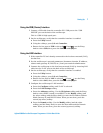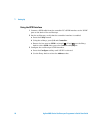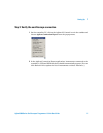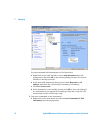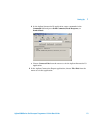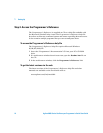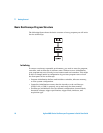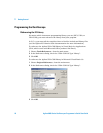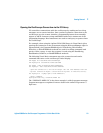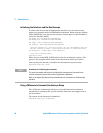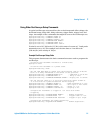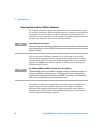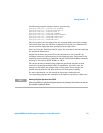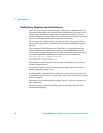Getting Started 2
Agilent 6000 Series Oscilloscopes Programmer’s Quick Start Guide 17
Capturing Data
Once you initialize the oscilloscope, you can begin capturing data for analysis.
Remember that while the oscilloscope is responding to commands from the
controller, it is not performing acquisitions. Also, when you change the
oscilloscope configuration, any data already captured will most likely be
rendered.
To collect data, you use the :DIGitize command. This command clears the
waveform buffers and starts the acquisition process. Acquisition continues
until acquisition memory is full, then stops. The acquired data is displayed by
the oscilloscope, and the captured data can be measured, stored in trace
memory in the oscilloscope, or transferred to the controller for further
analysis. Any additional commands sent while :DIGitize is working are
buffered until :DIGitize is complete.
You could also put the oscilloscope into run mode, then use a wait loop in your
program to ensure that the oscilloscope has completed at least one acquisition
before you make a measurement. Agilent does not recommend this because the
needed length of the wait loop may vary, causing your program to fail.
:DIGitize, on the other hand, ensures that data capture is complete. Also,
:DIGitize, when complete, stops the acquisition process so that all
measurements are on displayed data, not on a constantly changing data set.
Analyzing Captured Data
After the oscilloscope has completed an acquisition, you can find out more
about the data, either by using the oscilloscope measurements or by
transferring the data to the controller for manipulation by your program.
Built-in measurements include: frequency, duty cycle, period, positive pulse
width, and negative pulse width.
Using the :WAVeform commands, you can transfer the data to your controller.
You may want to display the data, compare it to a known good measurement,
or simply check logic patterns at various time intervals in the acquisition.



